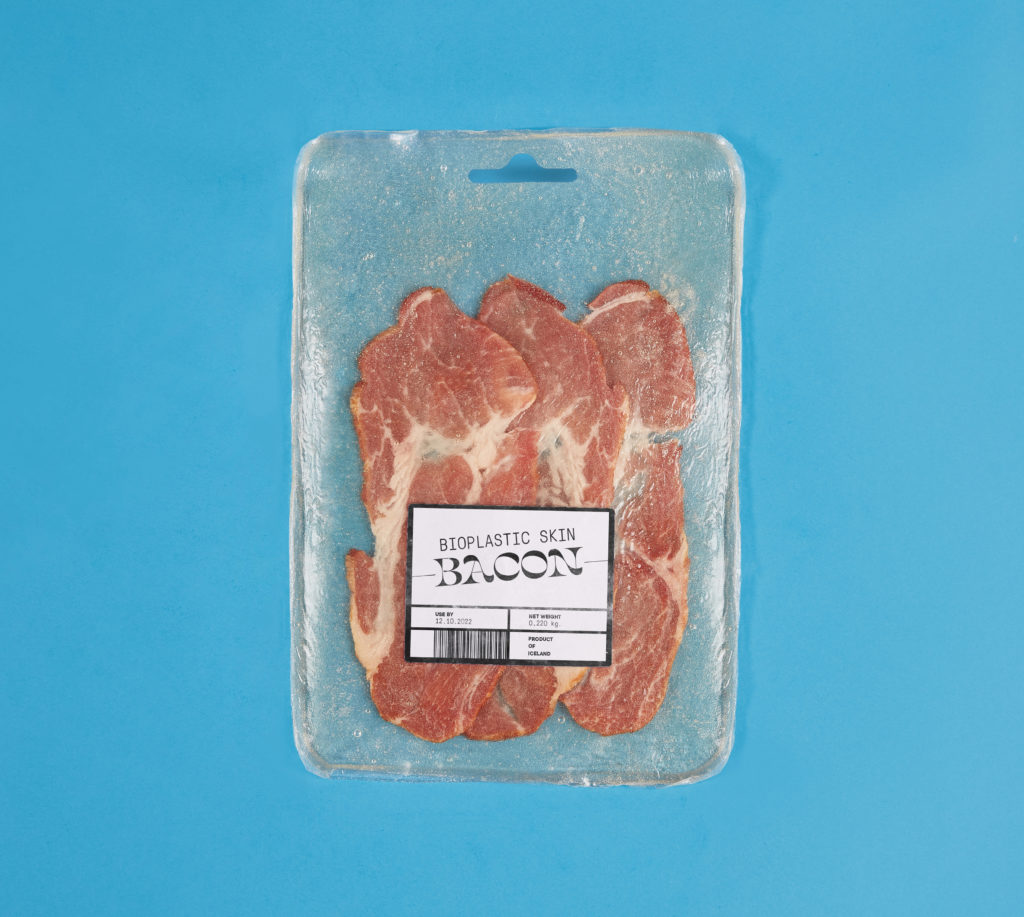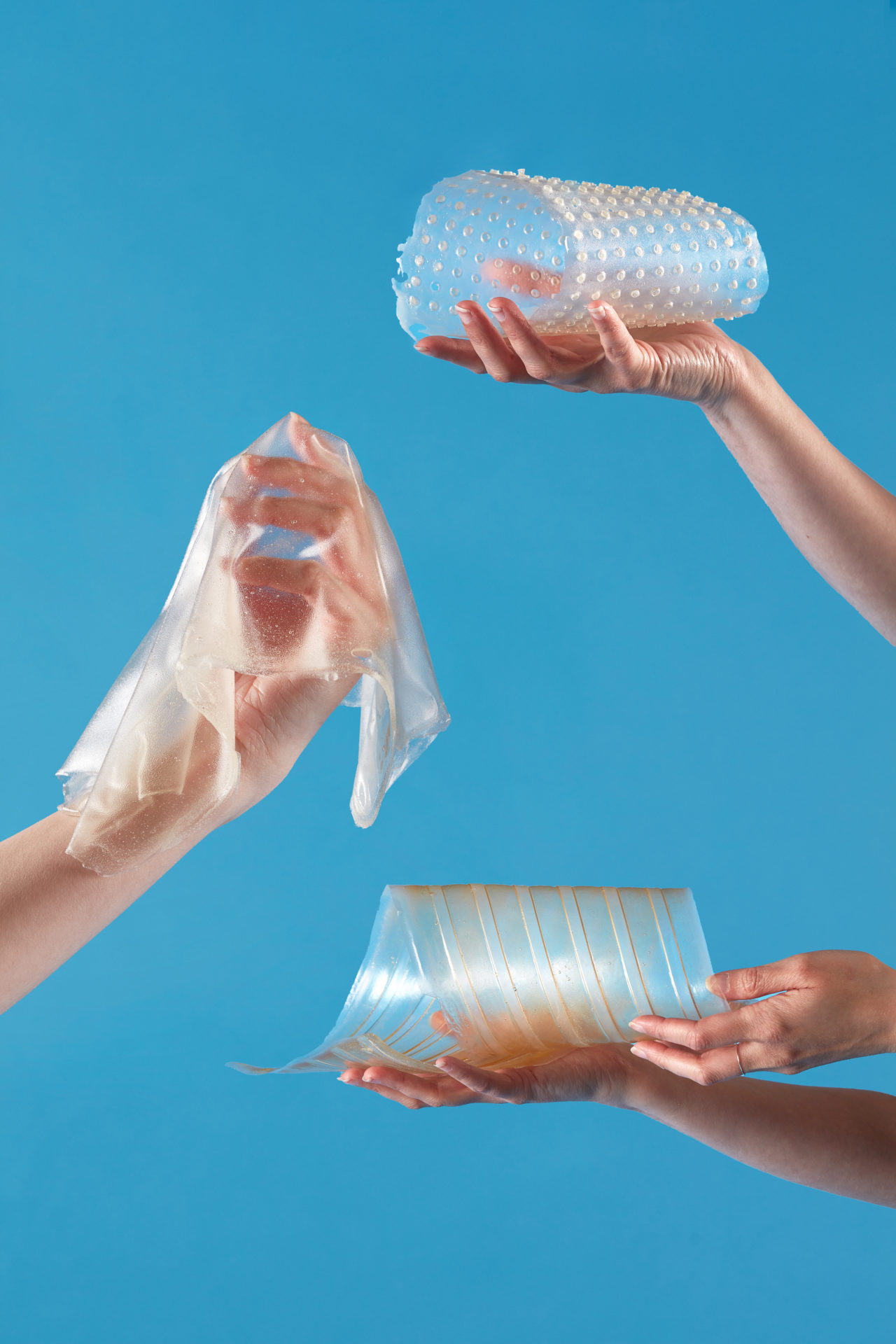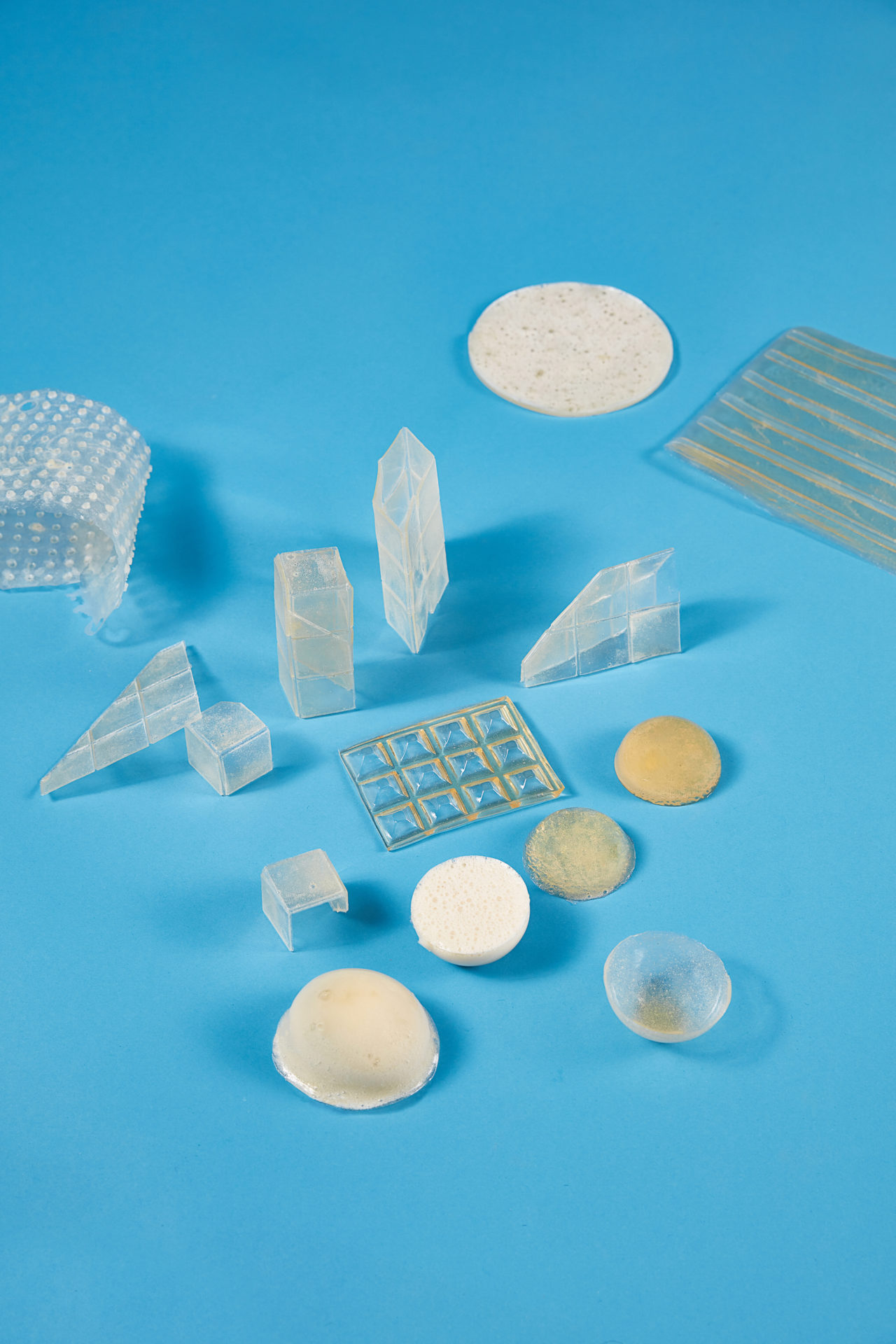Iceland (Reykjavík)
Meet the Icelandic designer turning animal skin and bones into food packaging to get us talking. And it is.
Close your eyes if you’re squeamish because independent Icelandic designer Valdís Steinarsdóttir is turning byproducts from the meat industry into a unique bioplastic material for packaging and vessels made of ground animal bone. The aim of her materials research project is to create awareness of meat consumption, the use of excessive plastic and consumerism – and she’s making no bones about making us ask ourselves difficult questions.
“We designers have as much influence as we have in society. We are, in a way, storytellers, who in an understandable way can point out various societal problems.” – Valdís Steinarsdóttir
Bioplastic Skin is a plastic-like biodegradable packaging for meat made out of the skin of the very same animal. As if making glue, Valdís boils animal hides to get gelatine to create a flexible material that can dissolve in hot water and biodegrades within weeks. If you’re wondering where she gets the skin from, she sources her materials from local slaughterhouses and farmers.
Valdís hopes the artificial plastic ‘skin’ could one day contain meat from the same animal it came from and work as a visual indication of how fresh the products it contains is. It would have the same expiration date, so wrapped meats would no longer require best before labelling.

With her Just Bones project, Valdís creates bowls and vases by grinding animal bones down to a powder using an advanced mortar machine. Everything is biodegradable.

We spoke to the unflinching Icelandic designer (pictured below) about reusing slaughterhouse waste and the morally challenging topic of meat processing: “Animal hides are often considered to be a byproduct in the meat industry,” she asserts. “If we make the choice to consume meat, it is our responsibility to utilise the whole animal and do it with as little pollution to our planet as possible.”

With her projects, the artist also addresses the problem of excessive use of plastic that has become widespread and commonplace. “Every day big quantities of plastic packaging are thrown away and eventually end up in a landfill or in the ocean. My aim is to reduce the use of plastic in the food industry, in particular the meat industry. We need to look no further than the skin of the animal itself.”
Valdís explained that she lives on an island where one has to be aware of materials or perhaps, the very lack of materials. “It’s important to explore discarded matter from different perspectives and find new opportunities for utilisation.”
Using these kinds of materials helps to avoid waste and make the most out of limited resources. When asked if this will make more of a demand for animal products, the designer explains: “My aim is not to make more demand for animal products, rather to use what is already there to reduce waste and experiment with disposed materials to discover their full potential.”
She plans to be unrelenting in her material experiments and causing noise with design that finds unique solutions to social and environmental issues.
“Even though 2020 was a strange year indeed, I will be forever grateful for the recognition I got for my work. For example, I won Formex Nova-Nordic Designer of the Year and was shortlisted for Emerging Designer of the Year at Dezeen Awards 2020.”

AtlasAction: For more projects with a a material twist, read more projects about the circular economy.
Project leader
Valdís Steinarsdóttir
Support the Atlas
We want the Atlas of the Future media platform and our event to be available to everybody, everywhere for free – always. Fancy helping us spread stories of hope and optimism to create a better tomorrow? For those able, we'd be grateful for any donation.
- Please support the Atlas here
- Thank you!



